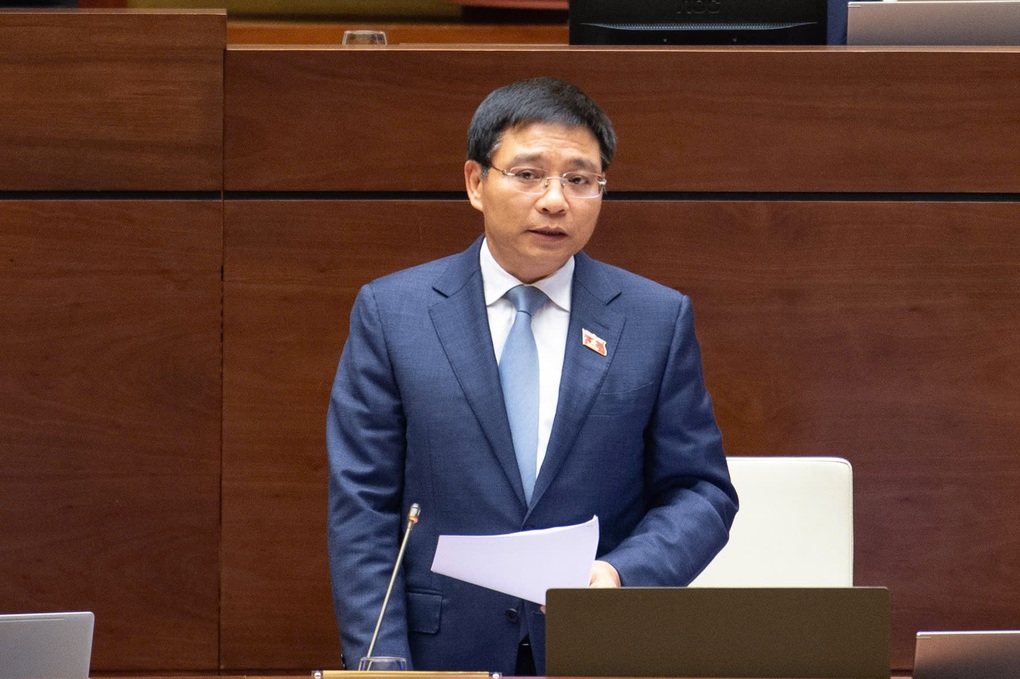Speaking at the discussion on the draft Law amending and supplementing a number of articles of the Law on Statistics on the afternoon of November 21, delegate Pham Van Hoa ( Dong Thap ) raised the issue that population data investigated by the statistical agency and population data managed by the police are "several hundred thousand people" different in some localities.

Delegate Pham Van Hoa (Dong Thap) (Photo: Media QH).
According to him, population statistics are "legal numbers", collected according to specialized survey methods; while population data from the household registration and permanent residence system is updated based on people's declarations and residence management by the police force.
"The data discrepancy can cause difficulties in socio-economic management," said a delegate from Dong Thap.
Delegates suggested that the law must clearly stipulate a unified application mechanism to avoid the situation where each agency uses one number, one province uses two sets of data. This is also the foundation to resolve overlapping and conflicting information between sectors.
Not only population, Mr. Hoa pointed out the situation of duplicate reports at the grassroots level, for example, the same enterprise is recorded by the commune, the statistical area, and the province, leading to many different reports on the same data. This makes the synthesis work difficult, and if not thoroughly resolved, the policy will be distorted from the input data stage.
Speaking immediately after receiving the explanation, Minister of Finance Nguyen Van Thang, the agency drafting the Statistics Law, acknowledged the discrepancy in the data. He said the main reason was that population data had not been fully digitized; some remote areas had not been updated in a timely manner (for example, children born were not registered immediately); and the methods of population census and residence management had differences in timing and process.
The Minister affirmed: "This situation will no longer exist in the near future, or the difference will decrease."

Minister of Finance Nguyen Van Thang spoke to receive explanations on the afternoon of November 21 (Photo: Media QH).
According to the plan, the Ministry of Public Security will complete the digitization of the population database by 2026. When this system is complete and the statistical agency is allowed to exploit the data according to the law, the discrepancy will be significantly reduced. At that time, the traditional population census will be narrowed down, focusing only on actual fluctuations that need to be surveyed in depth.
Mr. Thang also explained further about the major amendments in the draft law to ensure data consistency such as standardizing statistical indicators according to criteria (concepts, calculation methods, grouping, publication periods, data sources, agencies in charge of collection and synthesis); unifying the data production process; building a national statistical database to reduce dispersion.
In addition, the Ministry of Finance is reorganizing the statistical apparatus according to the two-level local government model. Instead of having one statistical officer per commune, a grassroots statistical agency will be formed to be in charge of 5-6 communes.
"This approach aims to improve professional quality, avoid duplication of data and reduce the burden on the commune level," said the Minister.
The Minister of Finance also emphasized the need to build a comprehensive statistical information system from the central to the communal level; supplement inter-sectoral indicators such as sustainable economy and logistics; and perfect the statistical reporting mechanism at the communal and provincial levels towards national unification without increasing the workload at the grassroots level.
Source: https://dantri.com.vn/thoi-su/vi-sao-dan-so-giua-co-quan-thong-ke-va-cong-an-khong-giong-nhau-20251121162647846.htm



![[Photo] Prime Minister Pham Minh Chinh attends the patriotic emulation congress of the banking sector](/_next/image?url=https%3A%2F%2Fvphoto.vietnam.vn%2Fthumb%2F1200x675%2Fvietnam%2Fresource%2FIMAGE%2F2025%2F11%2F24%2F1763981997729_tt-nhnn-jpg.webp&w=3840&q=75)



































![[Photo] Next to the "mountain of trash" after the flood, Tuy Hoa residents strive to rebuild their lives](/_next/image?url=https%3A%2F%2Fvphoto.vietnam.vn%2Fthumb%2F1200x675%2Fvietnam%2Fresource%2FIMAGE%2F2025%2F11%2F24%2F1763951389752_image-1-jpg.webp&w=3840&q=75)






































































Comment (0)